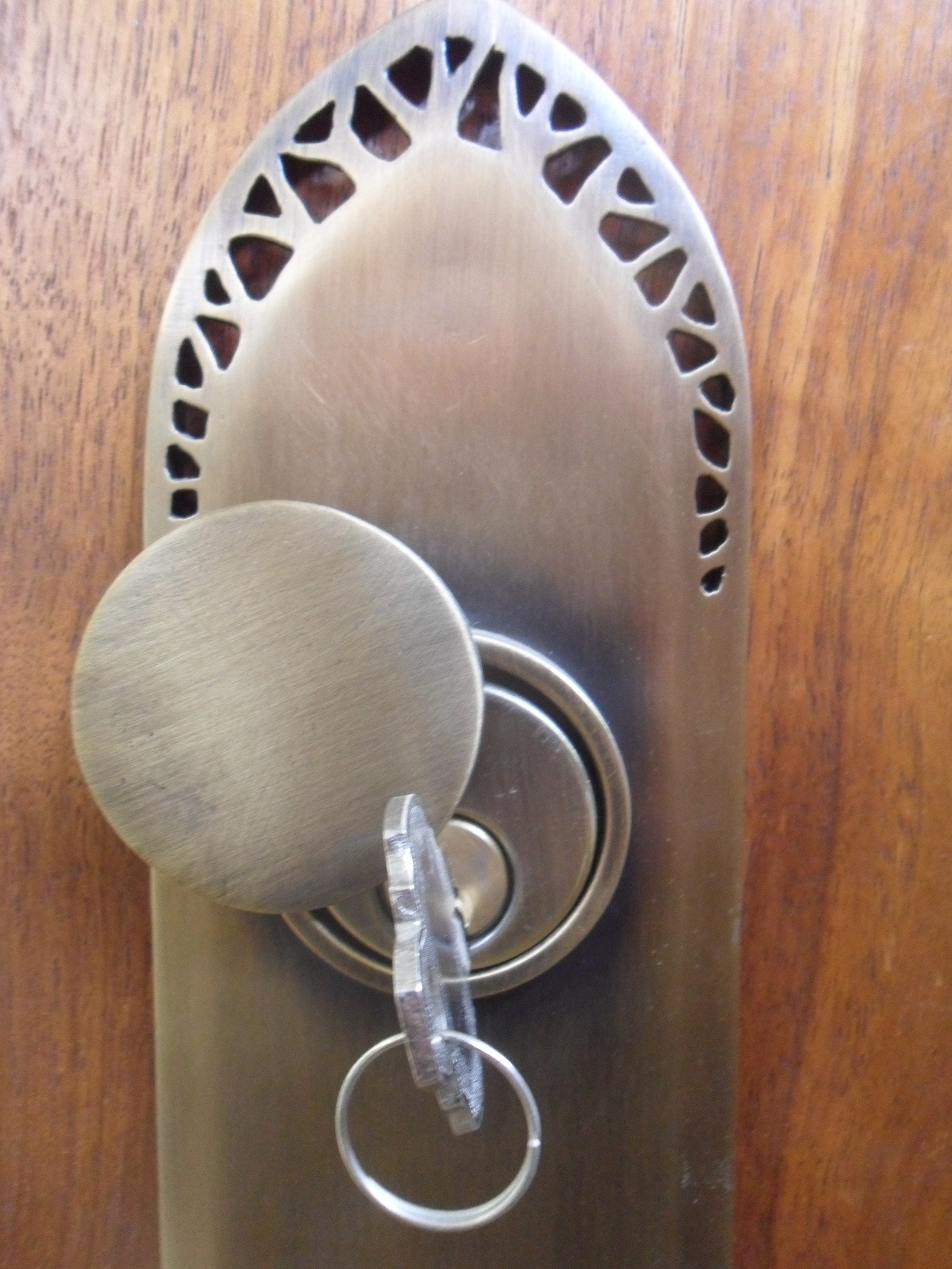Did you know there was a glossary for hardware? Today's post is not a test but, rather, information that will help you make an informed decision next time you purchase door, window and drawer hardware. Most of us are certainly aware of the definition of door knobs, drawer pulls and deadbolt locks but there are several other terms that are unique to the hardware industry that are important to know, especially if you will be making any hardware purchases in the near future. Let me help you out just a bit by defining some door hardware terms:
- Keyed cylinder: This is the lock mechanism that requires a key to activate and open or lock the cylinder.
- Cover plate: Some people feel that the mechanical or functional appearance of the deadbolt cylinder distracts from the artistic trim and prefer to conceal the face with a cover plate. In the case of the Hedgerow cover plate shown below, the plate itself is smooth and a cover plate has been designed to blend into the back plate. The same idea of a smooth design appears on our Lizard collection cover plate in which a cover plate was designed to resemble a stone or rock that a lizard might lounge on. (don't overlook the butterfly "lunch" waiting for the lizard as well)

- Personally, while I understand that perfection is a good goal to have in one's aesthetic arsenal, I prefer the cylinder face to be exposed. That way, when I get home and my arms are full, I can easily get my key into the cylinder, especially on dark evenings. But, then again, I freely admit that I do not have the manual dexterity of others.
- Deadbolt versus spring bolt. Wikipedia does a good job of describing the difference. A deadbolt lock, which is a more secure lock, cannot be moved to the open position without turning or rotating the lock. This is typically turned with either a key or on the inside of the door with what is termed a “turn piece”. By comparison, a spring bolt holds the lock in place with a spring which is activated by pressure, for example, by turning the door knob or depressing the door lever. This type of lock is often used in powder rooms where one locks the door from the inside by pushing in a pin. In this instance the pin is fixing the spring and preventing it from being turned by someone on the outside of the door. The spring bolt can be used with door knobs or door levers. To really complicate things, quality hardware such as ours is sometimes outfitted with an "ancillary spring" that accommodates the larger or heavier door levers and allows it to be more easily depressed.
For more information on these products or to view our complete line of custom hardware and get the latest news on what is happening at Martin Pierce, please visit us at www.martinpierce.com


